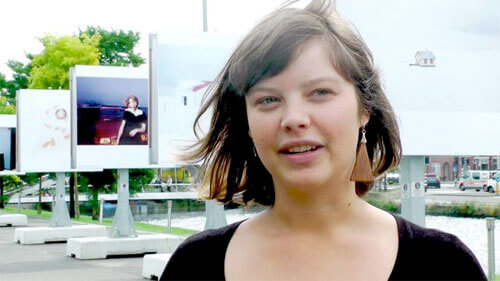Maroesjka Lavigne (b.1989, Belgium) gained her Masters in Photography at Ghent University in the summer of 2012. Her work has been shown internationally at the Foam Talent exhibition in Amsterdam, The Robert Mann Gallery in New York, Galerie Hug in Paris and Museum Saint Guislain in Gent, Belgium, among others. She self-published a book called ‘ísland’ in 2012 that sold out. In 2014 she published a postcard version of this book. In 2015 she made a commissioned work ‘Not seeing is a Flower’ in collaboration with the Flanders centre in Osaka. This was published in the catalog called Facing Japan. Her latest project 'Land of Nothingness' is made in Namibia and exhibited in the Robert Mann Gallery in New York.
She was selected for the Talent Call at Fotomuseum Amsterdam (FOAM) Netherlands 2012 and was the winner of the Emerging Talent competition of Lensculture in 2014 with the series ‘You are More than beautiful‘. In 2015 she won the Harry Penningsprijs in Eindhoven,Netherlands and in 2016 she won 1st place in the Landscape Category at the Sony World Photography Awards. She is currently living and working in Ghent, Belgium.
Source: www.maroesjkalavigne.be
Island: "Travelling through Iceland for four months, a country I was unfamiliar with: The light was bright, colours were vivid, and by the end of my trip the sun kept on shining all night long. Snow still held the country in its veil, creating a big white void. This has a way of cleaning up the landscape, the scenery gets more graphic. Wondering how this scene would look like in wintertime, I decided to go back for another month in January. The country turns blue at dusk in wintertime. All colours fade. Cities look like scale models seeking shelter from the weather in the shadow of the mountains.It was my intention to express the dazzling moment, that sometimes, time seems to stop."
